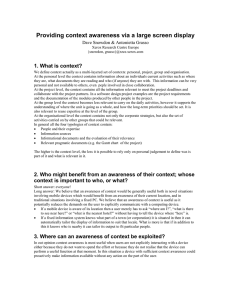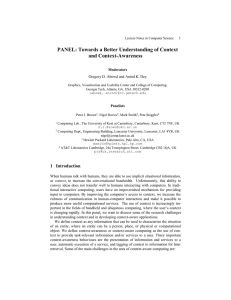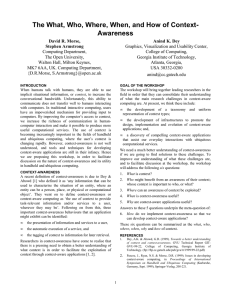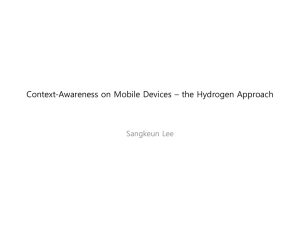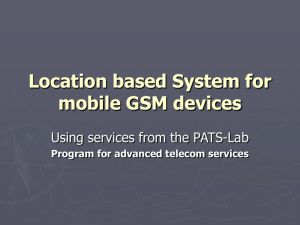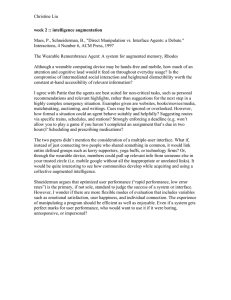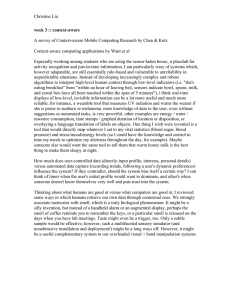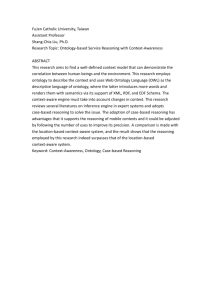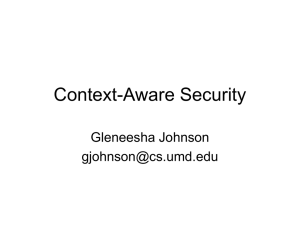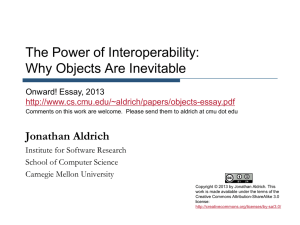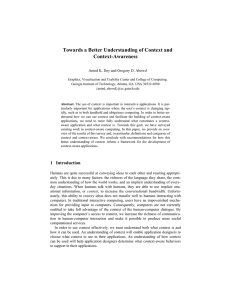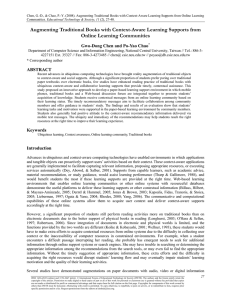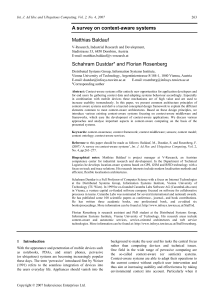Workshop 11: The What, Who, Where, When, Why and Introduction
advertisement
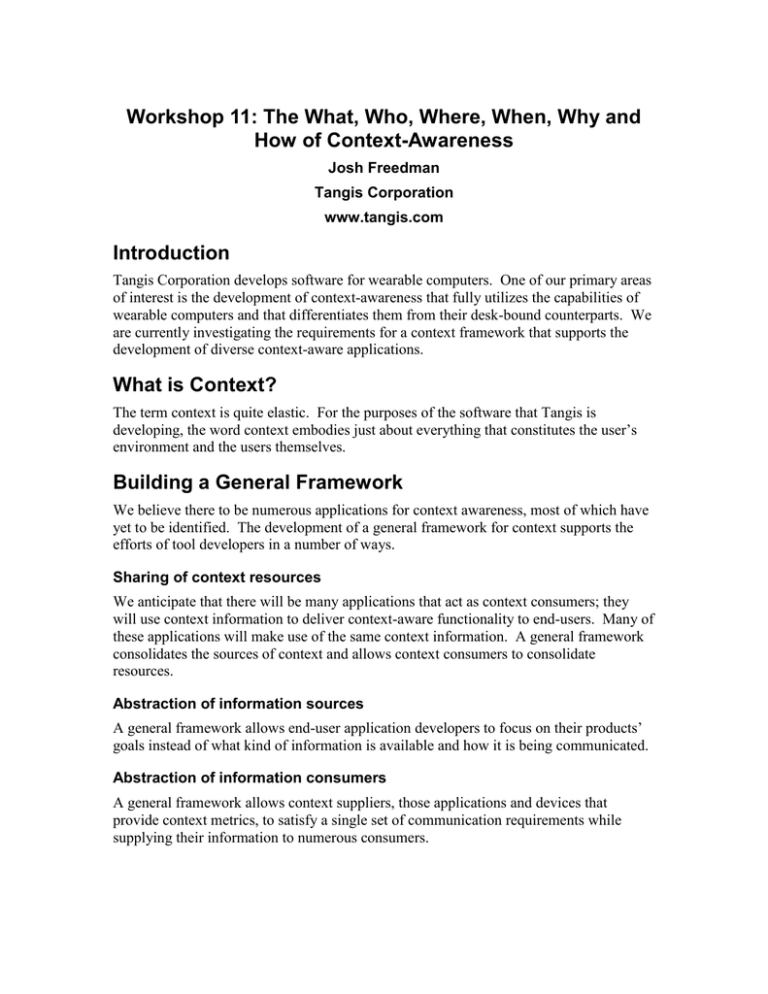
Workshop 11: The What, Who, Where, When, Why and How of Context-Awareness Josh Freedman Tangis Corporation www.tangis.com Introduction Tangis Corporation develops software for wearable computers. One of our primary areas of interest is the development of context-awareness that fully utilizes the capabilities of wearable computers and that differentiates them from their desk-bound counterparts. We are currently investigating the requirements for a context framework that supports the development of diverse context-aware applications. What is Context? The term context is quite elastic. For the purposes of the software that Tangis is developing, the word context embodies just about everything that constitutes the user’s environment and the users themselves. Building a General Framework We believe there to be numerous applications for context awareness, most of which have yet to be identified. The development of a general framework for context supports the efforts of tool developers in a number of ways. Sharing of context resources We anticipate that there will be many applications that act as context consumers; they will use context information to deliver context-aware functionality to end-users. Many of these applications will make use of the same context information. A general framework consolidates the sources of context and allows context consumers to consolidate resources. Abstraction of information sources A general framework allows end-user application developers to focus on their products’ goals instead of what kind of information is available and how it is being communicated. Abstraction of information consumers A general framework allows context suppliers, those applications and devices that provide context metrics, to satisfy a single set of communication requirements while supplying their information to numerous consumers. Ability to construct higher-level context concepts A general context framework encourages the development of more abstract context information because it provides a standard mechanism for exchange. Simple context information such as location can be combined with other information to answer more abstract context questions such as, “How busy am I?” Organization of Context Information Simply providing a common exchange mechanism for information does not, in itself, promote the interoperability of the various users. To fully realize the separation of tasks and resulting interoperability, the various participants must speak the same language. For this reason, it is necessary to establish a naming convention for commonly used context information. Questions of Interest Tangis is currently trying to answer the following questions in order to build a robust, complete, and useful general framework. What types of context information are useful? How is context information’s accuracy characterized? How do you account for time-dependence of information validity? What happens when there are multiple providers for the same context information? What inter-process communication technologies are applicable? Should a context naming convention be rule-based, explicit, or a combination of both?
